Global Focus on Roof Protection Marks New Era in Urban Resilience
As extreme weather events become increasingly frequent due to global climate change, rooftops—being the most exposed part of any building—are now recognized as a critical component in global strategies for sustainable urban development. From flood prevention to energy efficiency, roof protection is being re-evaluated and integrated into the core of urban safety and resilience planning.
In the 2024 UN-Habitat White Paper on Sustainable Urban Infrastructure, rooftops are described as “the city’s final line of defense,” emphasizing their multifaceted role in waterproofing, insulation, drainage, energy utilization, and disaster preparedness. The report notes that in recent hurricanes, storms, and heatwaves, buildings with poorly maintained or structurally weak rooftops often suffered the most damage, leading to substantial economic losses and widespread displacement.
To address this growing concern, countries across Europe, North America, and parts of Asia have introduced policies to strengthen rooftop protection standards and inspection protocols. For instance, Germany’s Energy Saving Ordinance mandates strict requirements for roof insulation and waterproofing; meanwhile, the U.S. Federal Emergency Management Agency (FEMA) provides targeted funding to reinforce rooftop systems in coastal and high-risk regions, helping buildings withstand hurricanes and heavy rainfall.
Moreover, the rise of green and multifunctional rooftops is becoming a central theme in urban governance worldwide. In Toronto, Canada, all new industrial and commercial buildings are required to install green roofs. Paris and Seoul are advancing initiatives to equip public rooftops with solar panels, vegetation, and rainwater harvesting systems, simultaneously improving environmental performance and structural resilience.
“A roof is no longer just a protective lid—it has become an energy regulator, an ecological buffer, and a disaster shield between a building and the city,” said Carla Moretti, a member of the International Union of Architects (UIA) Sustainable Development Committee. She emphasized that rooftop maintenance is not merely a matter of building upkeep, but a key aspect of how communities and cities adapt to a changing climate.
Despite the progress seen in many developed nations, rooftop safety remains a weak link in urban infrastructure across developing countries and climate-vulnerable regions. The United Nations Environment Programme is currently collaborating with several governments through the Urban Roof Safety Initiative, providing technical support, construction training, and policy development to offer diverse and sustainable rooftop solutions suited to different climates and economic contexts.
Experts widely agree that rooftops should not only be protected but activated—designed and used strategically within the urban fabric. In the era of climate uncertainty, rooftop protection is transitioning from a technical detail to a pivotal strategy in global urban resilience.
2025-05-19
DETAIL

Roof Leaks: The 5 Most Common Hidden Causes You Shouldn’t Ignore — Preventive Maintenance is Always Cheaper Than Emergency Repairs
The roof is the building’s first line of defense against wind, rain, and the elements. However, over time, many property owners face the same frustrating issue: roof leaks.
Even roofs that appear structurally sound on the surface may hide internal vulnerabilities. Each year, water damage caused by roof leaks results in costly repairs, energy inefficiency, and safety hazards.As a professional provider of roofing underlayment systems, we’ve identified the five most common causes of roof leaks and urge property owners to adopt a “prevent before you repair” mindset.
1. Aging Roofing Materials
Roof tiles, asphalt shingles, and metal panels naturally degrade over time. Cracks, warping, or missing pieces can allow water to penetrate the surface—especially if there is no high-quality underlayment underneath to act as a second barrier.
2. Damaged or Missing Waterproof Underlayment
Underlayment is the critical secondary defense layer beneath your visible roofing material. If it's improperly installed, deteriorated, or torn, it can allow water infiltration through otherwise invisible gaps—leading to leaks that are hard to trace.
3. Clogged Drainage Systems
Leaves, dirt, and debris can block gutters and downspouts, causing water buildup and backflow. During rainy seasons or storms, these blockages often lead to standing water and eventual leakage.
4. Poorly Sealed Roof Penetrations
Roof valleys, skylights, chimneys, ventilation pipes, and ridge joints are especially vulnerable if not sealed correctly. These areas often become the source of water leaks due to poor detailing or material failure.
5. Low-Quality Workmanship
Improper installation, poorly overlapped materials, or exposed nail holes can leave your roof vulnerable from day one. Many roof leaks only appear years after construction—but often trace back to early mistakes.
Our Pro Tips:
✅ Schedule regular inspections—especially after storms, freezing weather, or extreme heat✅ Upgrade to synthetic roofing underlayment with enhanced waterproofing and durability✅ Replace aged or damaged materials promptly to prevent widespread issues✅ Use professional-grade sealing at all roof joints, valleys, and penetrations✅ Conduct annual maintenance checks—twice a year for older buildings or tree-covered areas
2025-05-19
DETAIL

Choosing the Right Roofing Material: A Delicate Balance of Function, Climate, and Aesthetics
The roof is one of the most critical yet often overlooked parts of a building. It serves not only to shield against the elements but also plays a key role in the structure’s overall safety, energy efficiency, and visual impact. At the heart of a roof’s performance lies the material from which it is made.
Selecting roofing material is far from a mere aesthetic decision—it is closely tied to the building’s lifespan, maintenance costs, indoor comfort, and even energy consumption. In hot climates, materials that reflect solar radiation can significantly reduce the need for air conditioning. In cold, snowy regions, a roof must be able to withstand heavy loads and provide effective insulation.
Moreover, roofing materials vary greatly in terms of durability and maintenance. Some are tough and long-lasting, needing little to no replacement for decades, while others may require frequent repairs or updates due to weathering or aging. Therefore, when choosing a roofing material, it's essential not only to consider the initial cost but also to calculate long-term maintenance and replacement expenses.
From a structural standpoint, the weight of roofing materials is another important factor. Lightweight materials are suitable for buildings with limited load-bearing capacity, while heavier ones may require additional structural reinforcement—greatly increasing construction complexity and cost.
Aesthetic considerations are equally crucial. As the "fifth façade" of a house, the roof plays a significant role in defining the building’s overall appearance. The harmony between its color, texture, and architectural style often determines the final visual effect. A material that looks elegant on one style of home may appear out of place on another.
In recent years, as green building concepts have become more widespread, more people have started paying attention to the environmental impact and sustainability of roofing materials. Are they recyclable? Is their production low in carbon emissions? Do they offer effective thermal insulation? These have become key criteria for material selection in modern construction.
In conclusion, choosing roofing material is a process of careful and comprehensive evaluation, involving climate conditions, structural design, budget, aesthetic preferences, and sustainability. The right roof not only protects the building from nature’s forces but also enhances the quality of life and the value of the home. Only by thoroughly understanding the logic behind material choices can one make decisions that are both practical and forward-thinking.
2025-05-16
DETAIL

A Global Perspective on Roofs: Functional Evolution, Cultural Diversity, and Future Trends
The roof, as the uppermost structure of a building, is the first line of defense against the natural environment. Across the world, its forms and functions have evolved in response to climate, culture, and technology. Once merely a protective covering, the roof has transformed into a multi-functional architectural component that embodies structural safety, environmental sustainability, and aesthetic expression. A global examination of roofing reveals not only human adaptability to nature but also the diversity of architectural values and creative approaches across different regions.
Cultural Expressions of Roofing Around the World
In Asia, roofs often carry deep cultural and symbolic meanings. In traditional Chinese architecture, upturned eaves serve both practical and aesthetic purposes—facilitating drainage while symbolizing authority and status. In Japan, roofs constructed with timber and tiles reflect a philosophy of harmony with nature and subtle simplicity. In the Middle East, where the climate is dry and hot, flat roofs are commonly used not only for shelter but also as usable outdoor living spaces—ideal for sleeping, drying food, or social gatherings.
In Europe, the design of roofs is closely tied to architectural styles ranging from Gothic to Baroque to modernism. In Paris, the sloped grey rooftops help manage rainfall while creating a unified urban skyline. In Northern Europe, steeply pitched roofs are common due to heavy snowfall, helping to prevent accumulation and structural strain.
North America presents a diverse landscape of roofing practices. Suburban homes in the U.S. typically use asphalt shingles or metal panels for cost-effectiveness and ease of installation. In sunny states like California, there is a growing trend toward solar-integrated roofing systems, where roofs become both structural and energy-generating components.
Sustainability and the Reimagining of Roof Functions
As climate change accelerates, the role of the roof is shifting from passive protection to active environmental participation. Around the world, roofs are being reimagined as critical tools in the pursuit of carbon neutrality and urban resilience.
Germany is a pioneer in green roofing, with cities like Berlin and Hamburg offering subsidies to encourage rooftop gardens. These living roofs not only provide insulation but also improve air quality and reduce the urban heat island effect. Singapore integrates rooftop greenery with water management and urban farming, maximizing the utility of vertical space. In the Netherlands and Canada, "blue roofs" are emerging to manage stormwater by collecting and gradually releasing rain, reducing pressure on city drainage systems.
In parallel, the rise of distributed energy solutions is driving the adoption of solar roofing. Tesla’s solar roof tiles, for example, blend photovoltaic panels seamlessly into roofing materials, balancing aesthetics with energy efficiency. This convergence of form and function is shaping the roof as both an energy infrastructure and a design element.
The Roof as the City’s Fifth Elevation
Once overlooked, the rooftop is now being recognized as the “fifth elevation” of the urban landscape. In densely populated cities, where ground space is scarce, roofs are becoming valuable real estate for greenery, public spaces, and innovation.
In cities like New York, Tokyo, and Hong Kong, rooftops are being converted into gardens, community plazas, and recreational spaces. In the desert cities of the Middle East and North Africa, smart roofing systems combine reflective materials and automated ventilation to combat extreme heat. In developing countries, affordable and modular roofing solutions are helping to improve living conditions in informal settlements, creating new pathways for social equity.
Conclusion
Whether viewed as a cultural symbol, a platform for sustainability, or a canvas for urban transformation, the roof is undergoing a quiet yet profound reinvention around the globe. It is no longer the “end” of architecture, but a beginning—a bridge that connects humanity with nature, tradition with innovation, and shelter with opportunity. Above every roof lies not just the sky, but the promise of what cities and communities can become.
2025-05-15
DETAIL

Multidimensional Considerations and Emerging Trends
In construction, roof underlayment plays a critical role within the roofing system, even though it remains hidden beneath the surface. From material performance and environmental suitability to maintenance practices and regulatory frameworks, managing underlayment reflects the technical depth of roof system design.
Material Types and Application Contexts
The evolution of underlayment materials has extended from traditional asphalt-saturated products to a range of advanced synthetic polymers. Climate conditions in the project location heavily influence material suitability. For example, in hot regions, thermal resistance becomes a priority; in humid or rainy climates, water resistance and mold prevention are key considerations.
The type of roof structure also affects underlayment selection. Low-slope or flat roofs often demand higher-grade waterproof barriers, while steep-slope roofs may place more emphasis on mechanical stability under tension. Additionally, chemical compatibility between the roof covering and the underlayment is critical. Certain metal roofing systems may react adversely with specific underlayment materials, potentially causing corrosion or degradation—making material compatibility testing essential in the design phase.
Common Issues and Maintenance Considerations
Although underlayment is concealed beneath the roof surface, its failure can compromise the entire system. Common issues include tearing, wrinkling, edge curling, punctures, and degradation due to UV exposure or persistent moisture. Incomplete or delayed roof covering installation can expose underlayment to the elements, accelerating wear.
Routine maintenance should include underlayment assessment during roof inspections, especially after extreme weather events like storms, heatwaves, or freezes. While underlayment generally does not require frequent replacement, high-value buildings may benefit from non-invasive evaluations using thermal imaging or moisture sensors to detect hidden failures or water intrusion risks.
Industry Standards and Testing Protocols
Globally, various standards define performance requirements for roof underlayments. In North America, ASTM standards are widely adopted across the industry. Standards such as ASTM D226 (for traditional felts), ASTM D4869 (for lighter felt types), and ASTM D1970 (for self-adhered, high-performance underlayments) specify criteria for tear strength, permeability, and thermal stability.
In Europe, the EN standard framework covers structural integrity, weather resistance, and fire classification for roofing products. Some countries impose additional regulatory requirements or mandatory testing, such as wind uplift resistance or slip resistance, based on local climate and construction practices.
Design and construction teams must verify material compliance through documentation and certified test reports, ensuring that the selected products meet the legal and technical criteria applicable to the project’s jurisdiction.
Market Evolution and Future Directions
Modern roof underlayments are increasingly designed for multifunctional performance. Some products feature reflective surfaces or energy-regulating properties to support green building goals. Growing environmental awareness has also driven manufacturers to reduce volatile organic compound (VOC) content and improve sustainability throughout the production lifecycle.
On the technological front, premium roofing systems have begun integrating smart monitoring solutions. These include embedded sensors that track moisture or leak conditions in real time, enabling proactive maintenance. While such "intelligent roofing" systems are currently more common in critical infrastructure like hospitals, data centers, and airports, they are gradually gaining interest in broader commercial and residential applications.
2025-05-14
DETAIL

Analysis of Key Considerations for the Application and Installation of Synthetic Roofing Underlayment
As roofing systems evolve toward higher performance and greater durability, synthetic roofing underlayment has emerged as a core component of modern roof protection systems. Thanks to its superior physical properties and ease of installation, it is increasingly replacing traditional asphalt felt. Its primary function goes beyond serving as a temporary waterproof barrier; it plays a critical role throughout the roof’s service life by acting as a buffer, a secondary waterproofing layer, and structural protection. Therefore, it is essential to understand its application from multiple angles, including material characteristics, system compatibility, installation techniques, and environmental adaptability.
Synthetic underlayments are typically made from high-performance polymers such as polypropylene (PP) or polyethylene (PE) and are manufactured using multilayer co-extrusion or woven fiber technologies. These materials offer lightweight construction combined with high tensile strength. Key advantages include low water absorption, excellent tear resistance, UV resistance, and superior dimensional stability compared to traditional asphalt felt. When selecting materials, attention should be paid to critical technical specifications such as tensile strength, puncture resistance, UV exposure rating, temperature tolerance, slip-resistance properties, and the material’s sealing performance around fasteners. These attributes have a direct impact on waterproofing performance and long-term reliability.
Equally important is the integration of the underlayment with the overall roofing system, including the substrate sheathing, waterproof membranes, finishing materials (such as shingles or metal panels), and detailed components like eaves, gable ends, skylights, and vents. Since synthetic underlayment typically serves as a secondary waterproofing layer, its durability and flexibility must match the service life and stress conditions of the top layer. In steep-slope roofing systems, slip resistance is especially critical for worker safety and to prevent material shifting during installation.
During installation, professional-grade fasteners (such as cap nails or ring shank nails with plastic washers) should be used in accordance with both the manufacturer’s guidelines and project design drawings. Fastener spacing and edge overlaps must be strictly controlled. Underlayment should be installed from eave to ridge along the roof pitch to ensure proper water shedding. Reverse laps must be avoided. At transition areas—such as ridges, valleys, corners, and penetrations—butyl tape or compatible sealant strips should be applied to reinforce continuity and watertightness. In complex roof intersections, such as valleys and ridge junctions, multilayer overlaps or prefabricated flashing accessories are recommended to enhance protection and minimize the risk of failure from ponding, wind uplift, or thermal movement.
Environmental conditions during installation also have a significant impact on underlayment performance. Installation should be avoided when temperatures fall below 5°C (41°F) or rise above 40°C (104°F), as extreme temperatures can lead to cracking or softening. Excessive moisture or high substrate humidity may trap vapor under the material, causing blistering or mold. Moisture content should be carefully managed, and adequate ventilation must be ensured. For roofs left exposed for more than 48 hours, a UV-resistant underlayment with extended exposure ratings should be used, strictly adhering to the manufacturer's specified limits.
Storage and transportation of the product are also crucial. Underlayment rolls should be stored in dry, shaded, and well-ventilated areas, away from direct sunlight and moisture. They should not be subjected to crushing or edge damage. During the entire construction period, material handling must be part of the site’s quality control procedures. Spot checks on lap sealing and fastener performance may be required to ensure installation compliance.
In summary, although synthetic roofing underlayment may appear to be a thin, secondary layer, it is in fact a foundational component of roof waterproofing performance. Appropriate material selection, standard-compliant installation, and proper maintenance all contribute directly to the building’s waterproof integrity and lifespan. As green buildings, energy-efficient roofing, and high-performance structures become more prevalent, mastering the professional standards of synthetic underlayment installation is becoming an essential skill for architectural design, construction supervision, and building envelope management.
2025-05-13
DETAIL

Scorching Heat Alert: Is Your Roof at Risk? Your Summer Roof Maintenance Guide Is Here!
As summer heat intensifies, strong sunlight and extreme temperature shifts are silently impacting the safety and comfort of your roof. For many buildings, the roof is more than just a shield from wind and rain — it’s a vital barrier that helps regulate indoor temperature and energy efficiency. As a professional provider of roofing underlayment products and services, we remind all property owners: summer is the critical time for roof maintenance.
Three Major Summer Challenges for Roofs:
· Thermal expansion accelerates material agingHot days and cooler nights create frequent expansion and contraction cycles, which stress roofing materials and often lead to cracks, bubbling, or surface damage.
· Strong UV rays weaken waterproof layersProlonged exposure to intense sunlight can cause traditional waterproofing layers to lose flexibility, crack, and develop leak points.
· Sudden thunderstorms increase drainage pressureFrequent short, heavy summer storms can overwhelm drainage systems. If gutters and downspouts are blocked, water can accumulate and lead to backflow or leakage.
Summer Roof Maintenance in Three Steps:
✅ Inspect underlayment and waterproofing layersA quality roofing underlayment is key to withstanding heat and moisture. Check for signs of aging, cracking, or detachment — and replace damaged sections promptly.
✅ Clear out gutters and downspoutsLeaves and debris can block drainage paths. Regular cleaning helps prevent ponding and water backup issues.
✅ Assess insulation and ventilation systemsThe hotter your roof, the harder your building works to stay cool. Proper insulation paired with a well-functioning ventilation system reduces energy costs and improves comfort.
Our Expert Advice:
In extreme summer conditions, choosing roofing underlayment with high heat resistance, UV protection, and superior insulation performance can greatly extend the lifespan of your roof and reduce maintenance needs. We offer waterproofing and insulation solutions tailored to all types of roof structures, along with professional installation services. Feel free to contact us for a consultation.
2025-05-13
DETAIL

Rooftop Construction: The Battle Above the Building
In the modern construction industry, rooftop work is often misunderstood as a mere finishing touch. But for seasoned professionals, the roof is not just the “hat” of a building—it is one of the most overlooked yet critical components of the entire structure. The rooftop must handle waterproofing, insulation, thermal regulation, structural load, and even aesthetics and sustainability. A single error here can affect the entire building.
Challenges Above Ground
The rooftop faces more severe environmental exposure than any other part of a building. It directly endures rain, snow, wind pressure, ultraviolet rays, and extreme temperature shifts. A sudden downpour or a stretch of scorching heat can quickly expose even the smallest flaw in a roof system. That’s why rooftop construction is not just about choosing the right materials—it’s about mastering the details.
In years of hands-on experience, the biggest challenge is not technical complexity, but a disregard for precision. For example, a poorly treated flashing or a misaligned seam may seem minor at first but can lead to leaks, blistering, or cracking over time. Experience teaches us that the roof never forgives a “good enough” mindset.
Beyond Materials: The Value of Judgment
Today’s roofing materials have advanced significantly—TPO membranes, self-adhesive SBS, spray polyurethane, and more offer high performance. However, no material can replace the judgment and adaptability of skilled workers. A successful roofing system isn’t just a collection of premium products; it’s a tailored solution based on location, climate, and building specifics.
Rooftop construction is often subject to height constraints, wind exposure, and weather unpredictability, placing high demands on the team’s coordination, safety awareness, and craftsmanship. A competent crew must maintain quality while balancing efficiency and on-site risks at elevated heights.
The Roof Is No Longer Just a Roof
As building concepts evolve, rooftops are becoming multi-functional spaces. Green roofs, rooftop gardens, and photovoltaic systems are emerging as key features in sustainable urban design. In this context, rooftops are no longer passive surfaces—they’re active components of energy conservation, ecology, and even leisure.
For contractors, this trend demands greater cross-disciplinary collaboration. A modern rooftop may involve waterproofing, electrical systems, landscaping, and steel structures all in one project. Managing such complexity goes far beyond the scope of traditional waterproofing.
Conclusion: The Value You Don’t See
Rooftop construction rarely gets the immediate praise of curtain walls or elegant interiors. But over years of silent endurance through wind and rain, the value of a well-built roof becomes undeniable. A leak-free, thermally efficient, and durable rooftop is the truest mark of construction excellence.
Whether it's a flat roof, sloped roof, or complex geometric form, every rooftop deserves respect. Above the building, in that often-forgotten space, lies the true test of construction quality.
2025-05-12
DETAIL

Roof Construction: A Critical Element for Building Safety and Comfort
The roof is one of the most essential components of a building's structure. It not only serves the fundamental purpose of providing shelter from the elements, but also plays a vital role in determining the building’s lifespan, energy efficiency, and overall comfort. While construction methods may vary, understanding the significance of roof construction, the common challenges involved, and the importance of ongoing maintenance is crucial for both property owners and building professionals.
1. Why Is Roof Construction So Important?
As the building’s “fifth façade,” the roof is continuously exposed to wind, sunlight, rain, and snow. It endures the most direct impact from the natural environment. If the roof is poorly designed or improperly constructed, problems such as water leakage, cracking, and heat loss can easily occur, causing inconvenience to occupants and even leading to property damage.
Moreover, well-executed roof construction can significantly improve a building’s energy performance. For instance, proper insulation can help reduce heat loss in winter and minimize heat gain in summer, cutting down on heating and cooling costs.
2. Common Issues and Hidden Risks
Typical problems in roof construction include aging waterproof layers, poorly designed drainage systems, inadequate insulation installation, and structural deformation. Among these, water leakage is the most frequent and problematic. A leaking roof not only damages interior finishes but can also cause structural corrosion and electrical failures.
Another often overlooked issue is poor ventilation. Especially in pitched roofs, insufficient ventilation can lead to heat buildup, accelerating material aging and reducing indoor comfort levels.
3. Material Selection Determines Performance
A wide variety of materials are used in roof construction, such as shingles, waterproof membranes, insulation boards, and metal panels. The selection of materials not only impacts the functional performance of the roof, but also influences the building’s aesthetics, maintenance costs, and environmental footprint.
For example, high-reflectivity roofing materials (like white metal roofs or reflective coatings) can significantly reduce heat absorption during summer, thereby lowering cooling energy demand. Green roofs, or vegetative roofs, not only help combat urban heat island effects but also enhance a building’s ecological value.
4. Ongoing Maintenance Should Not Be Overlooked
Even the sturdiest roof is not maintenance-free. Over time, the roofing system requires regular inspections and upkeep to detect and resolve cracks, loose materials, clogs, and other issues in a timely manner. In areas prone to extreme weather, conducting a thorough roof inspection at least once a year is highly recommended.
Beyond structural elements, special attention should be paid to roof drainage systems, ventilation ducts, skylight seals, and other detailed components. These are often the weakest points where water leakage or heat loss is most likely to occur.
Conclusion
Roof construction is not merely a technical task—it is a comprehensive discipline that integrates building safety, functional design, and environmental adaptation. Gaining a basic understanding of roofing systems helps enable more informed and scientific decision-making, ensuring building quality and user comfort from the very start. Whether for new construction or renovation projects, prioritizing the roof is a fundamental act of responsibility toward the entire home.
2025-05-10
DETAIL

Synthetic Roofing Underlayment: Breaking Boundaries in Modern Roofing Systems
Synthetic roofing underlayment has increasingly evolved into an "interface material" within modern building systems. It no longer merely serves as a physical barrier but acts as a mediating layer between different structural components of the roof. Whether in metal roofing systems—where it buffers thermal expansion—or in asphalt shingle systems—where it helps dissipate shear forces—synthetic underlayment is now recognized as a structural “stress moderator.” This role becomes particularly important in high-rise buildings or projects with complex topographies.
In recent years, data-driven design has permeated roofing design as well, and synthetic underlayment, as a standardized component, fits neatly into Building Information Modeling (BIM) systems for parametric management. Some engineering consultancies have already integrated it into performance simulations to predict roof behavior under extreme wind loads, temperature fluctuations, and long-term moisture exposure. This digital integration is not only optimizing pre-construction decision-making but also enhancing the predictability of roofing systems over their entire life cycle.
Material stability in long-term service has become a focal point for manufacturers and research institutions. Synthetic underlayment typically exists in a semi-enclosed, high-temperature, high-humidity environment beneath the outer roof layer—conditions that can accelerate material degradation. New generations of synthetic products now incorporate infrared-reflective additives, microporous membranes, and cross-linked polymer structures to resist thermo-oxidative aging and biological degradation. These innovations reduce maintenance needs and support the shift toward low-intervention building operations.
Another important focus has emerged around the chemical compatibility of underlayment with adjacent layers. In green building projects, for instance, roofing systems are often integrated with rainwater harvesting or photovoltaic systems. This requires the underlayment not only to manage moisture effectively but also to remain chemically inert when in contact with metals, electrical components, or fire-retardant coatings. An industry-wide evaluation framework is gradually taking shape to assess how well synthetic underlayment can “coexist” within increasingly complex roof assemblies.
Finally, end-of-life recycling and reuse of synthetic roofing underlayment is becoming an unavoidable industry challenge. Despite its excellent durability, the very longevity of synthetic materials is giving rise to disposal pressures. Some jurisdictions have already introduced preliminary policies requiring the classification and separation of dismantled roofing materials. As a composite product, synthetic underlayment still lacks a standardized recycling path. This calls for greater coordination between material design and the deconstruction phase of buildings—and, more broadly, a shift toward “design for recyclability” in the building materials sector.
2025-05-09
DETAIL

The Hidden Responsibility of Synthetic Roof Underlayment in Building Lifespan
From the perspective of building lifecycle maintenance, synthetic roof underlayment doesn’t occupy a visible or celebrated role. It lies beneath the surface, unnoticed by occupants and rarely prioritized by property managers. Yet, it is precisely this “overlooked presence” that plays a long-term and critical role in maintaining the overall health of a building.
Throughout the decades-long operational lifespan of a building, the roofing system must withstand countless cycles of thermal expansion, heavy rain, wind loads, and subtle structural shifts. Positioned within this dynamic environment, the underlayment functions as a regulating layer. Its durability isn’t immediately visible; it is validated indirectly—often years later—by whether the roof leaks or requires major repair.
Maintenance records often reveal that roofing failures rarely originate from the outermost covering. Instead, they often trace back to minor, undetected degradations in the underlayment—stress fatigue, tiny punctures, or seam vulnerabilities. These seemingly insignificant flaws may not cause immediate failure but can allow moisture to accumulate over years, leading to mold, rot, and the slow deterioration of insulation and structural elements. The eventual repair costs can far exceed the initial investment required for a higher-grade underlayment.
Asset management for roofing systems is evolving from reactive responses to proactive monitoring. This shift is prompting building maintenance teams to re-evaluate components that were previously considered secondary. Increasingly, facilities management is integrating roof health models using sensors and moisture monitoring systems. In such systems, underlayment material data—batch numbers, manufacturing specs, test results—are incorporated into building information modeling (BIM). Once captured systematically, this information forms the foundation for predictive maintenance strategies, helping prevent structural crises over the building's lifecycle.
A unique challenge in this context is the underlayment’s low assessability. Unlike waterproof coatings, which can be measured or visually assessed, synthetic underlayment often requires destructive sampling or peel testing to evaluate performance degradation. These tests are rarely conducted but represent the largest “unknown variable” in determining roof longevity.
The future of building lifecycle management will require better visibility into these “hidden materials.” This means developing clearer status-tracking tools and maintaining long-term performance logs. Synthetic roof underlayment is not a one-time decision—it’s a material whose selection, documentation, monitoring, and maintenance frequency directly influence the predictability of structural integrity and the manageability of operational costs.
In other words, enduring building value is often built not on what is seen, but on the foundational layers and forgotten choices quietly supporting it all.
2025-05-07
DETAIL

Functional Evolution and Adaptive Role of Synthetic Roofing Underlayments in Roofing Systems
As roofing systems become increasingly complex, synthetic roofing underlayments are no longer seen as merely secondary protective layers. Instead, they are evolving into integral components within the building envelope. This shift is driven by advancements in material science, the refinement of building codes, and the growing need for resilience against extreme climate conditions.
Continuous Evolution of Material Performance
Early synthetic underlayments were typically made from polypropylene or polyethylene, with primary functions centered on waterproofing and mechanical strength. Today’s products are trending toward multi-layer composites infused with performance additives. These include UV stabilizers, heat-resistant agents, and reinforced mesh layers that help the material resist aging and maintain dimensional stability over time.
Simultaneously, there's a notable shift toward lightweight formulations that reduce dependence on sheer thickness. This not only decreases roof loading but also allows future integration of additional rooftop systems such as green roofs or photovoltaic arrays without compromising structural integrity.
Evolving Standards and Certification Systems
Various international standards now address performance benchmarks for synthetic roofing underlayments, including ASTM D226, CAN/CSA A123.3, and EN 13859. Beyond traditional tear resistance and temperature tolerance, more standards are beginning to assess long-term aging, water re-entry resistance, and fire classification.
Green building certification systems such as LEED and BREEAM are also indirectly influencing product development by evaluating environmental attributes like VOC emissions and material recyclability. This broader regulatory landscape is pushing manufacturers to consider the full lifecycle impact of their products, not just basic performance metrics.
Climate Adaptability and Regional Variation
As climate extremes become more prevalent, synthetic underlayments must perform reliably under a wider range of environmental stresses. In hot and humid zones, resistance to mold and hydrolysis becomes crucial. In colder regions, flexibility at low temperatures and resistance to brittleness are critical.
High-altitude or high-radiation areas demand enhanced UV resistance. In regions with wide diurnal temperature swings, thermal expansion behavior and dimensional stability significantly affect long-term sealing performance. Some manufacturers now offer climate-specific variants that meet regional certifications such as the Florida Building Code or the Canadian National Building Code (NBC).
A Changing Role in Industry Trends
Synthetic roofing underlayments are increasingly woven into the broader functionality of modern building envelopes. In BIM-integrated and smart building systems, some high-end applications are exploring the fusion of underlayment materials with sensor technologies to monitor moisture, stress, and leak potential in real-time.
In the context of net-zero architecture and rooftop energy systems, underlayments are also being considered for expanded roles—such as thermal isolation, vapor control, or as slip layers between rigid roof layers. These developments indicate a shift from underlayment as passive protection toward an active component of the building’s overall performance strategy.
2025-05-06
DETAIL



 BIGFOOT 15
Learn More
BIGFOOT 15
Learn More

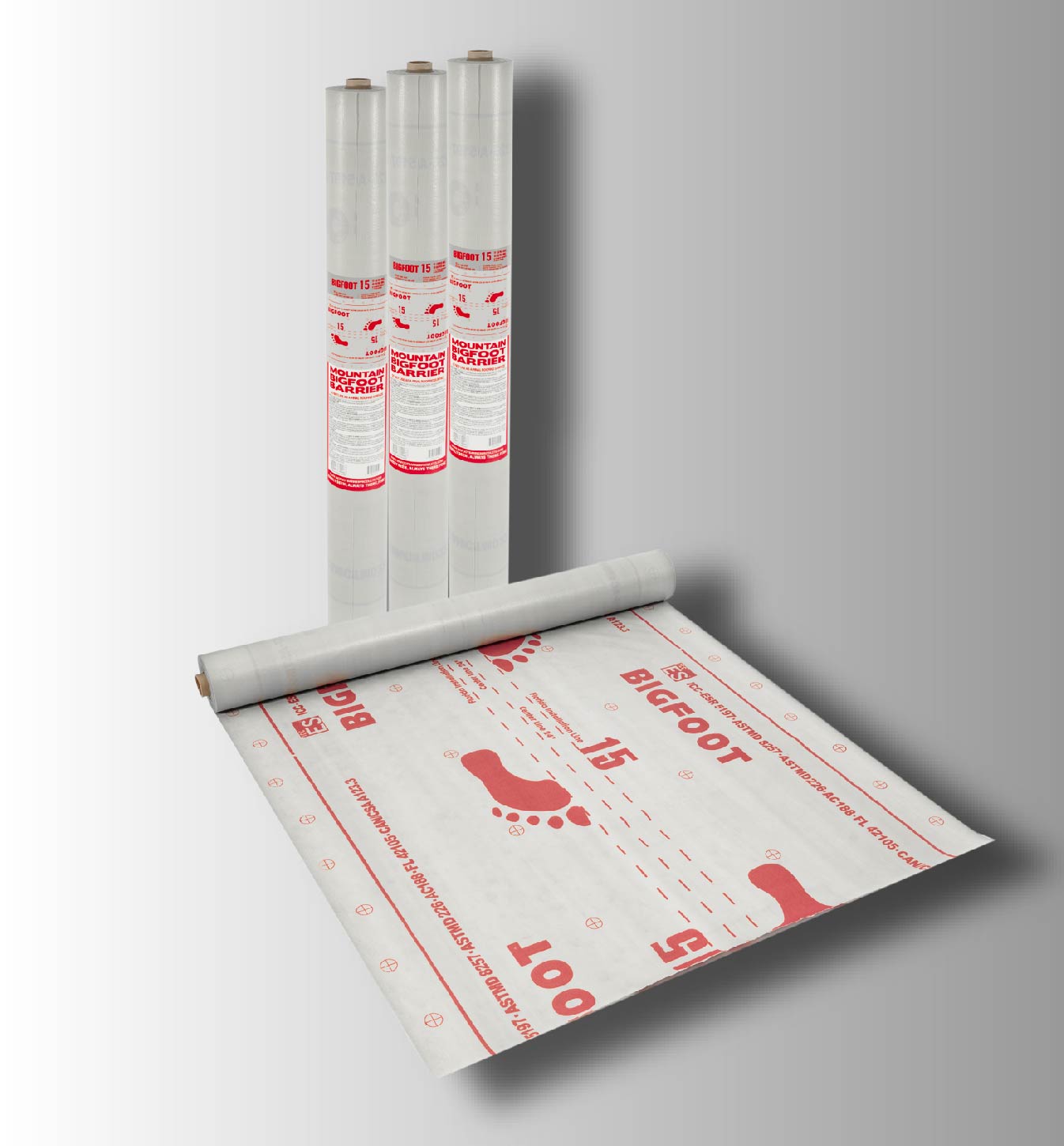
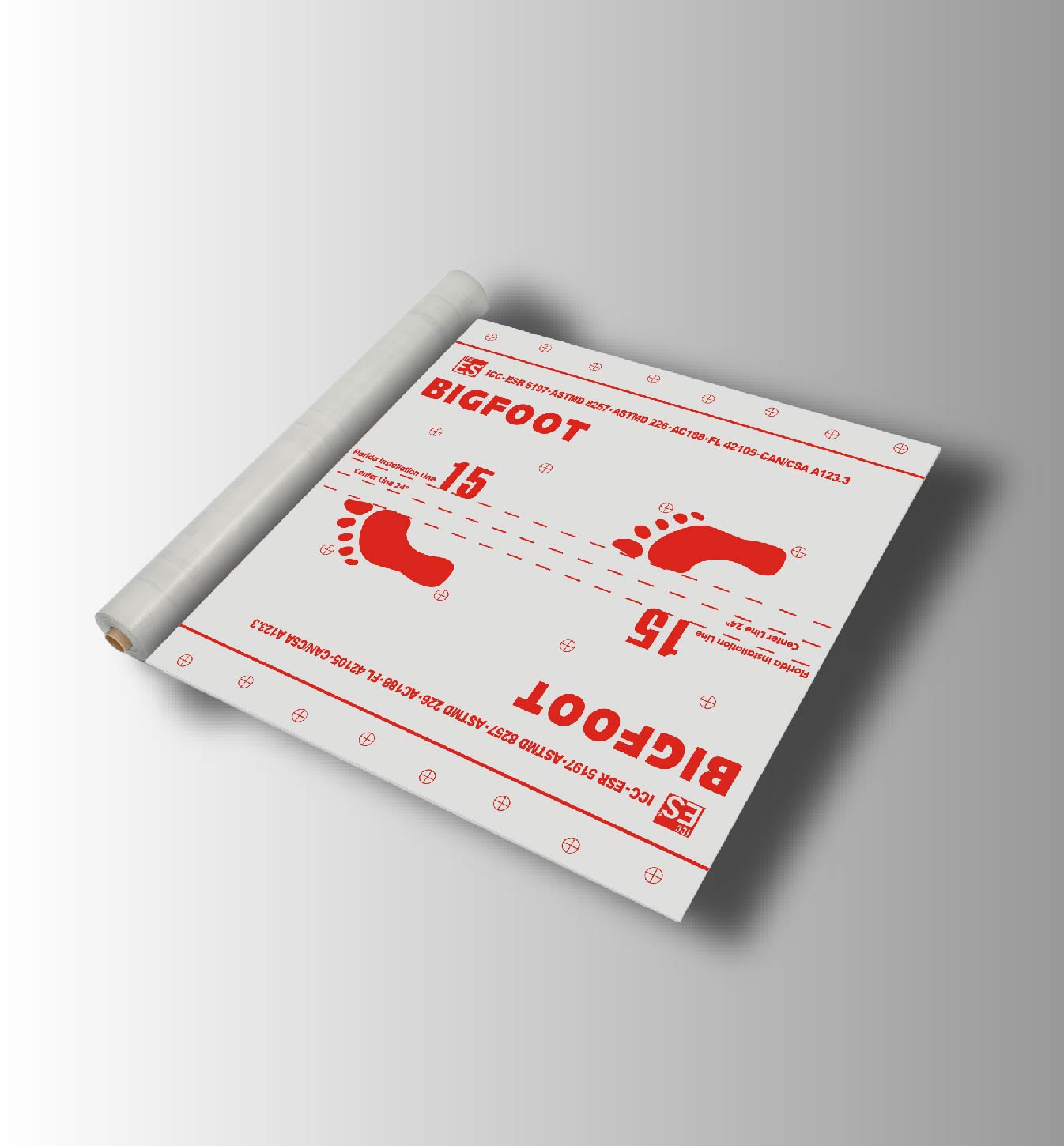
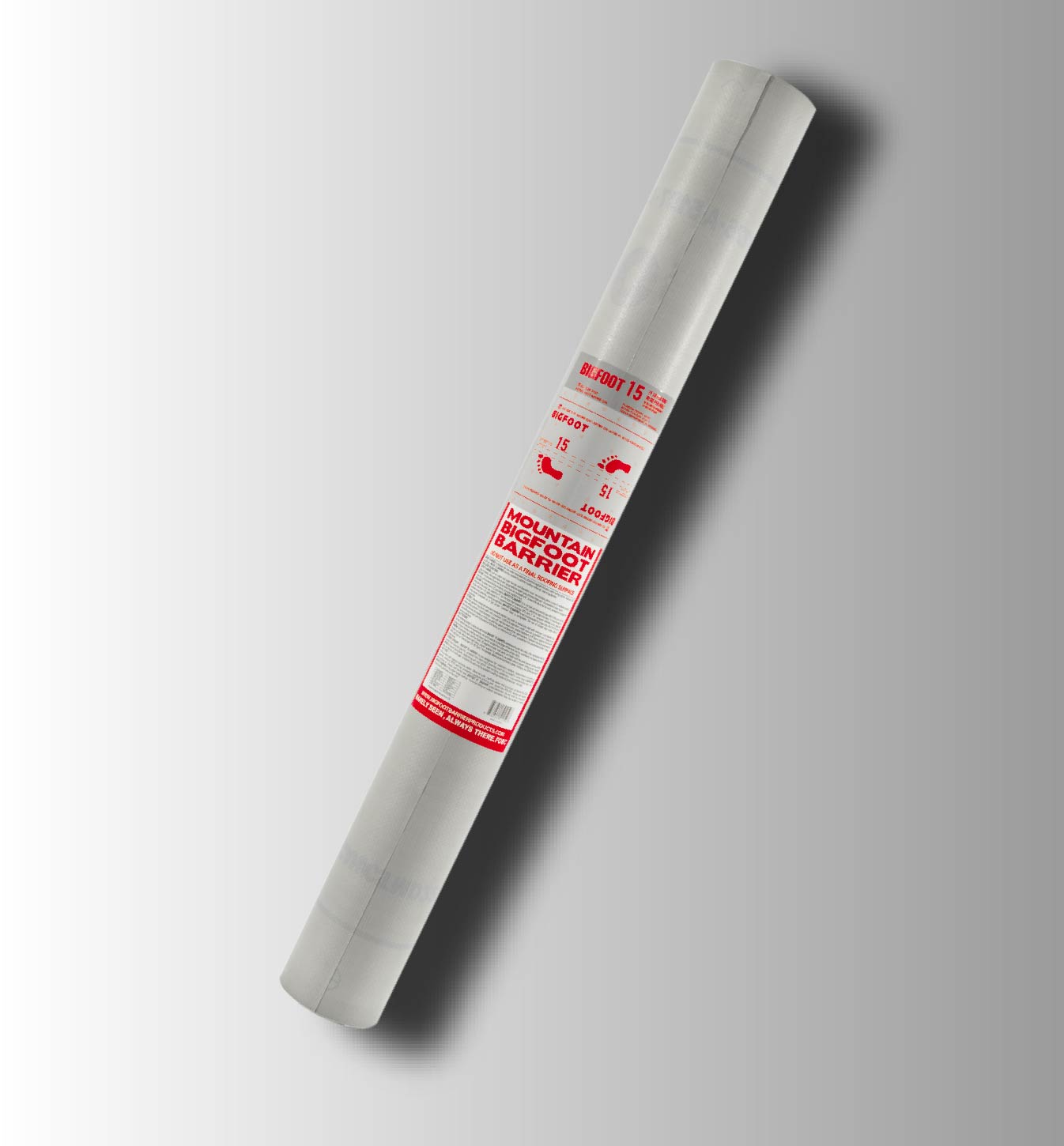
 BIGFOOT 30
Learn More
BIGFOOT 30
Learn More

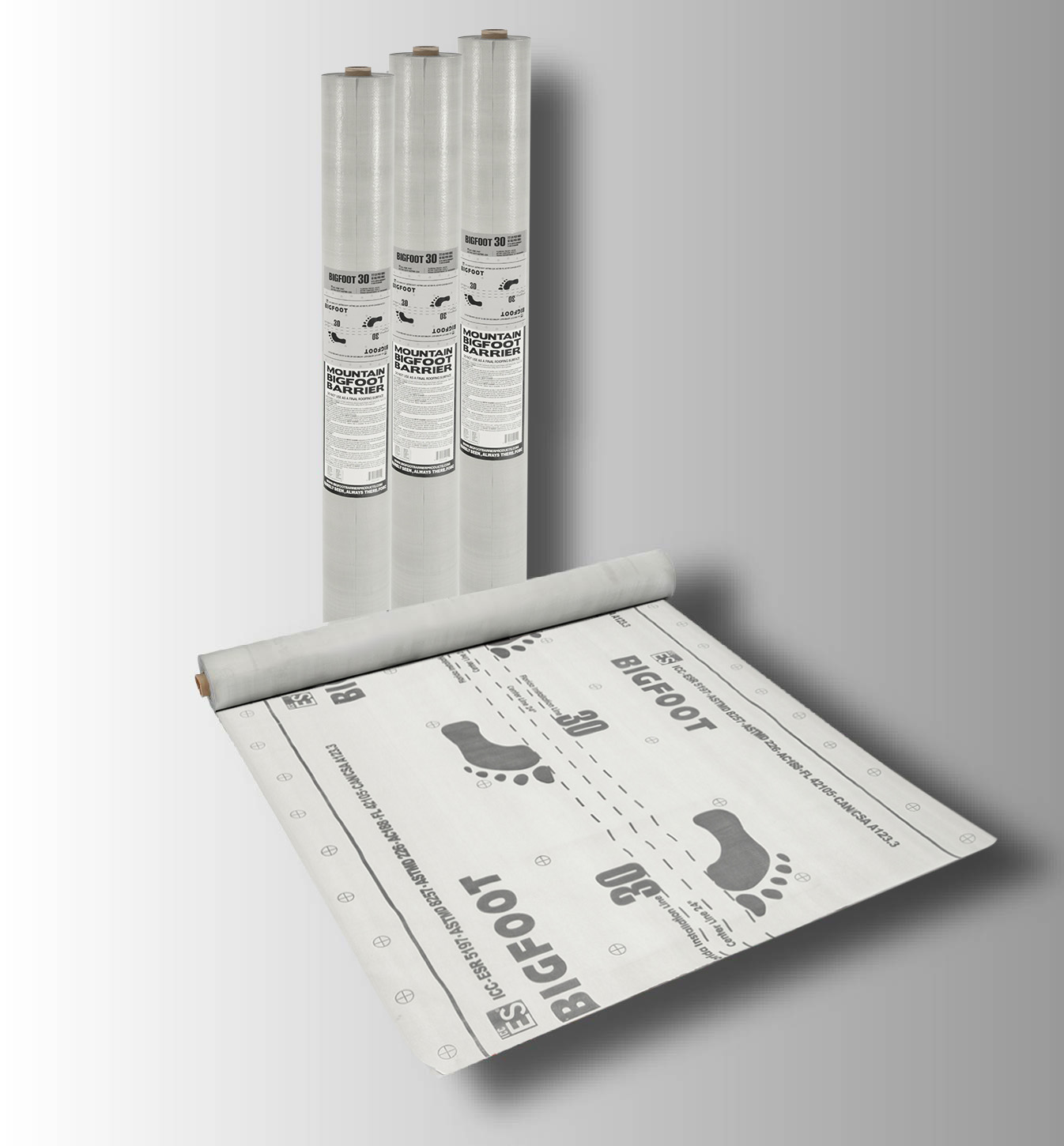

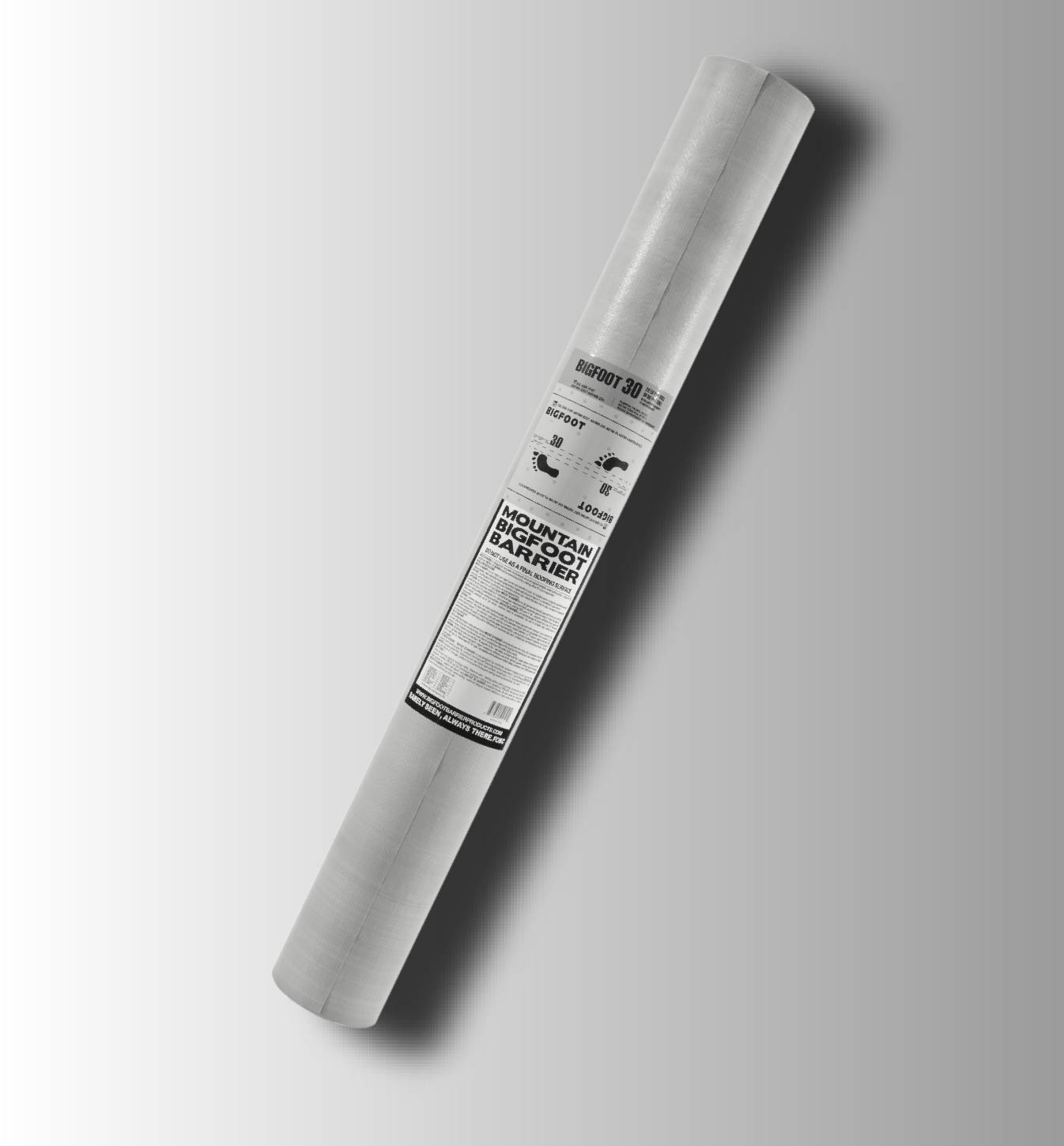
 BIGFOOT 180
Learn More
BIGFOOT 180
Learn More

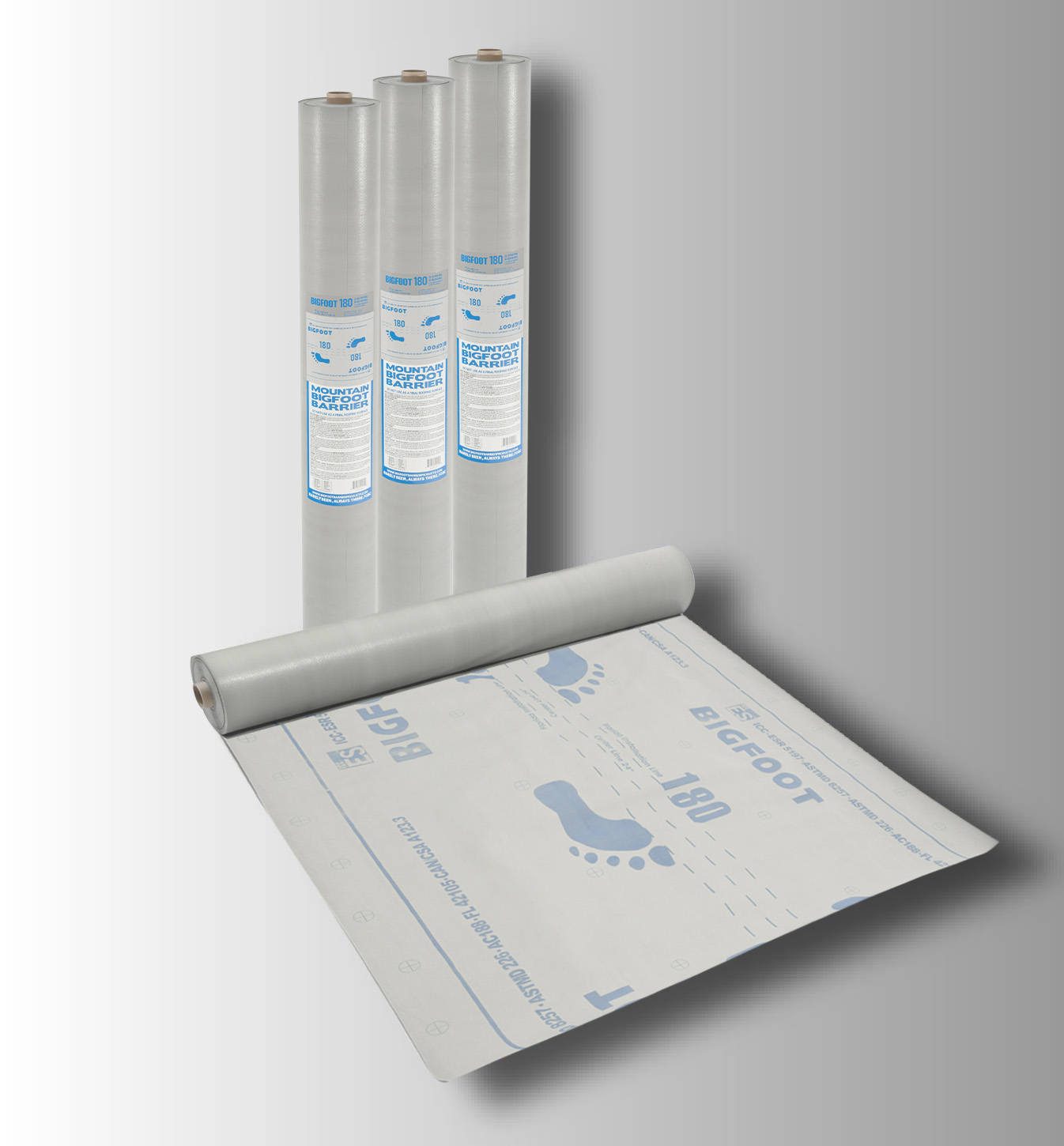
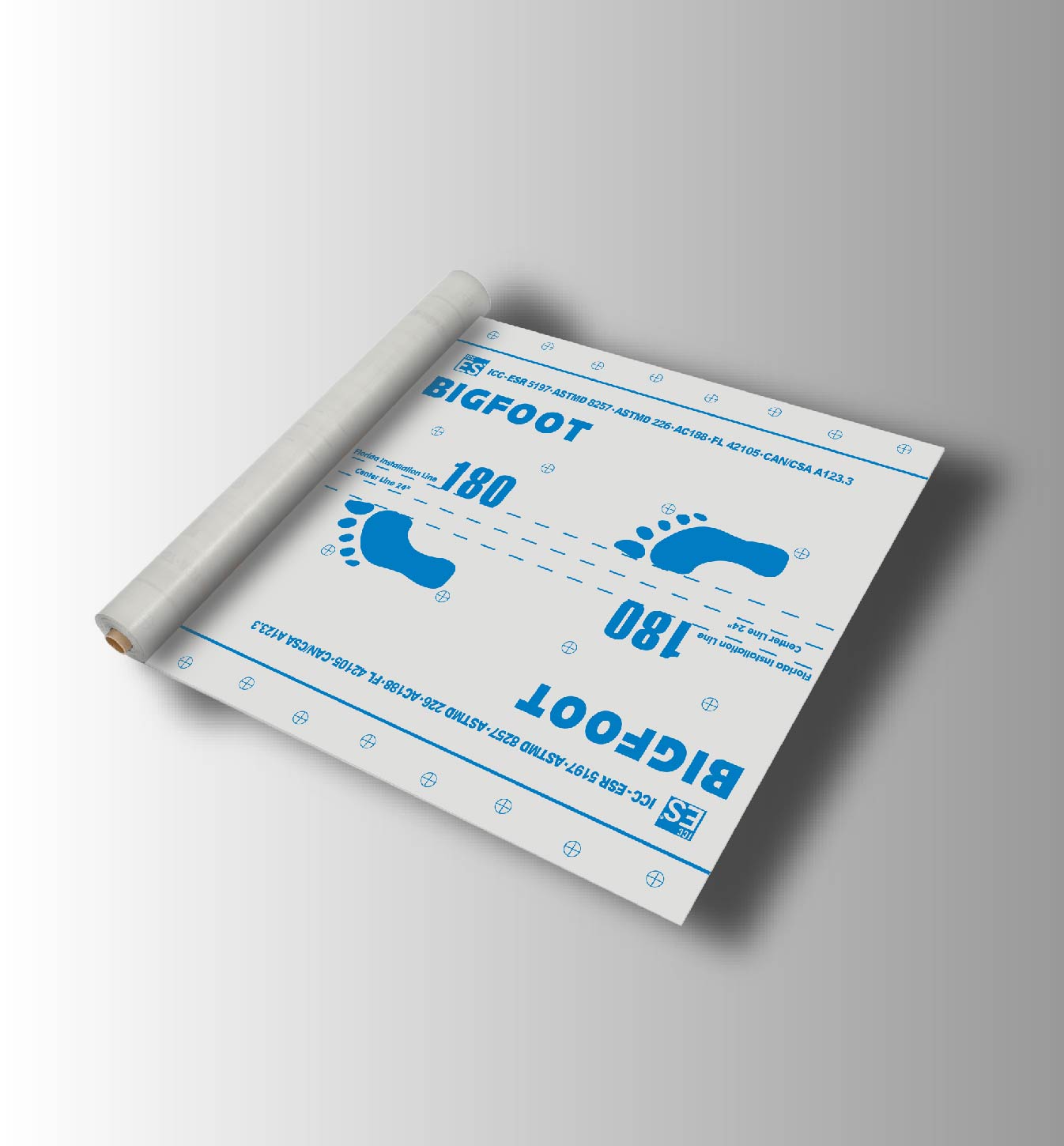
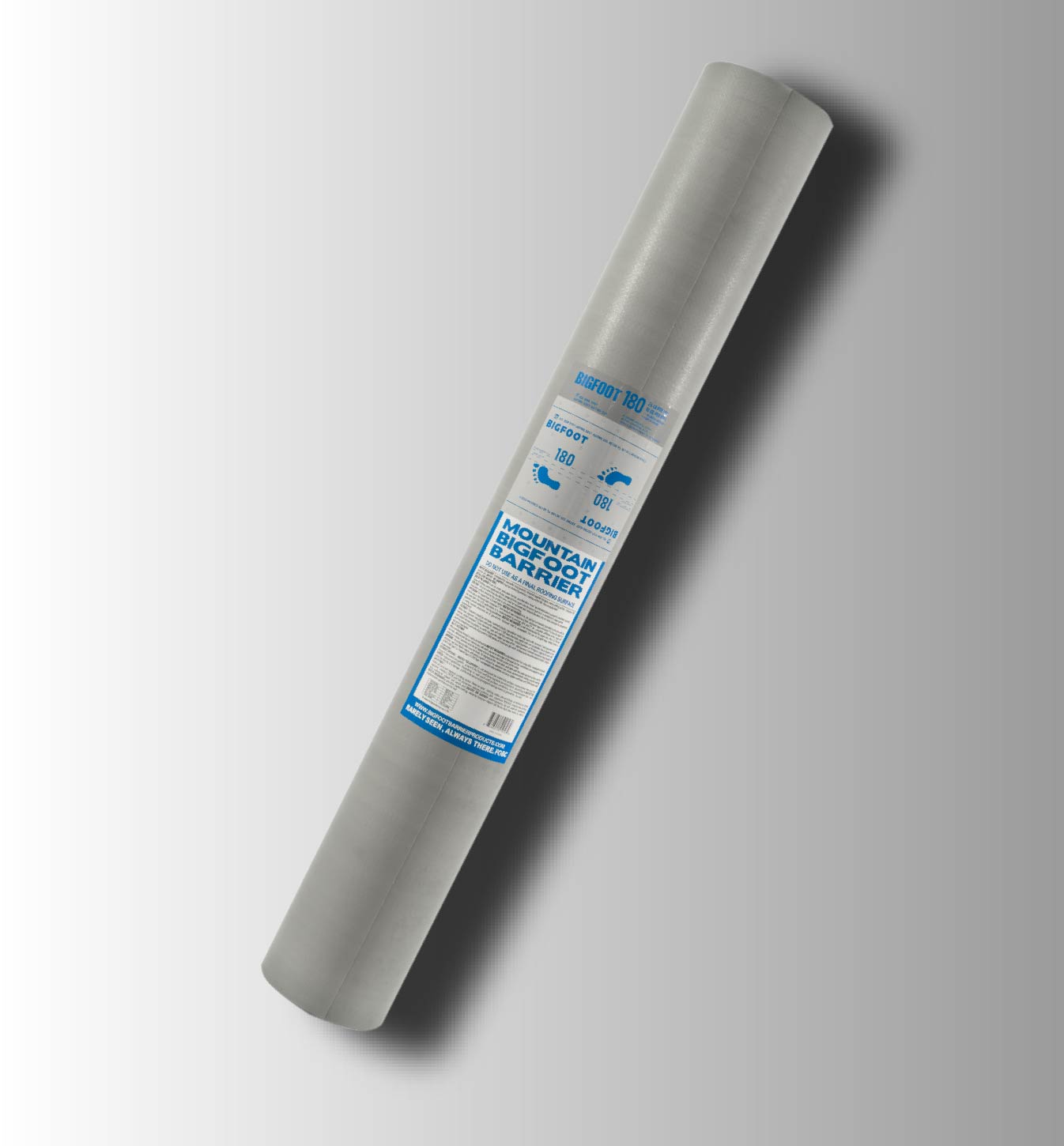
 BIGFOOT HD
Learn More
BIGFOOT HD
Learn More

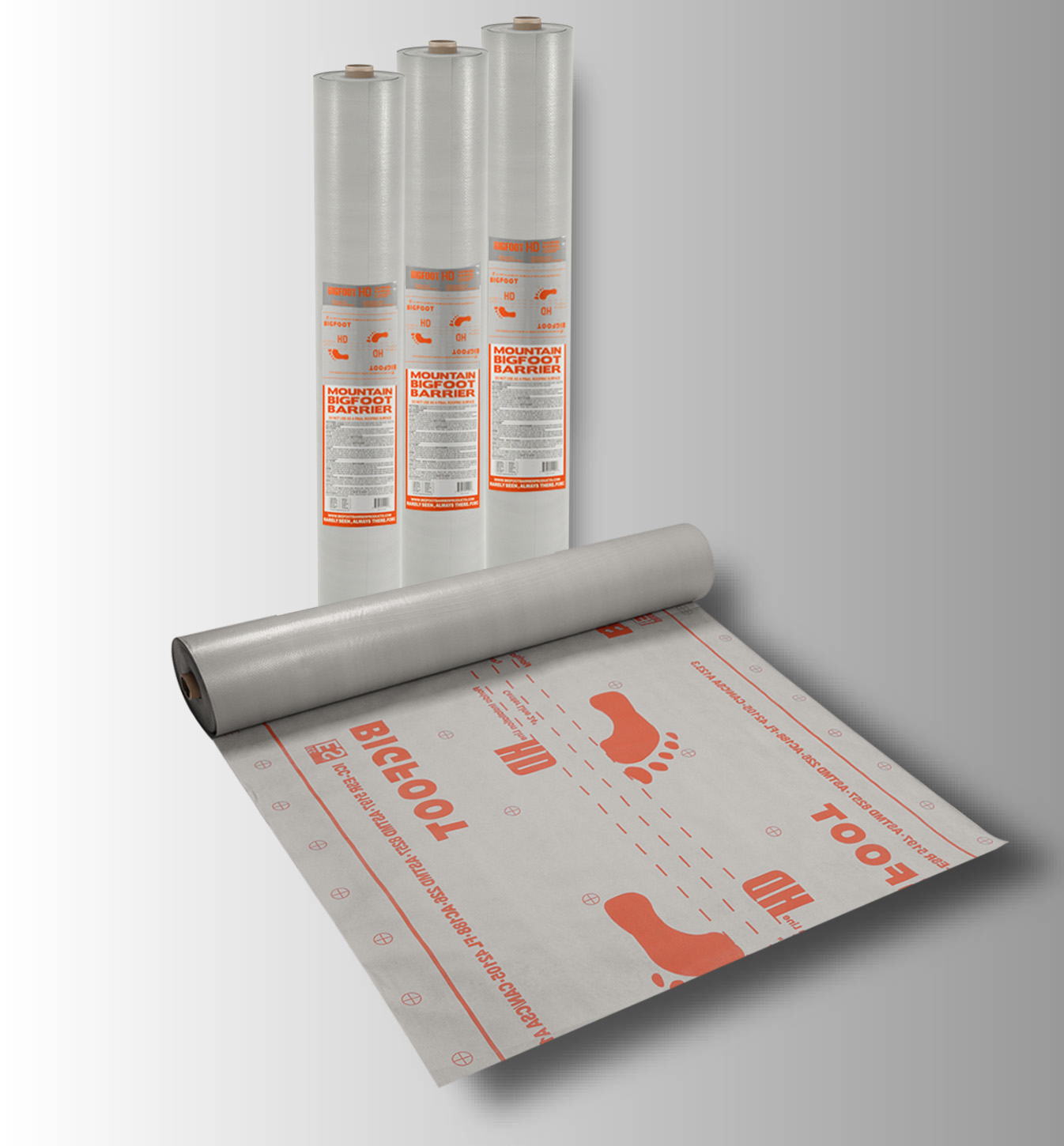
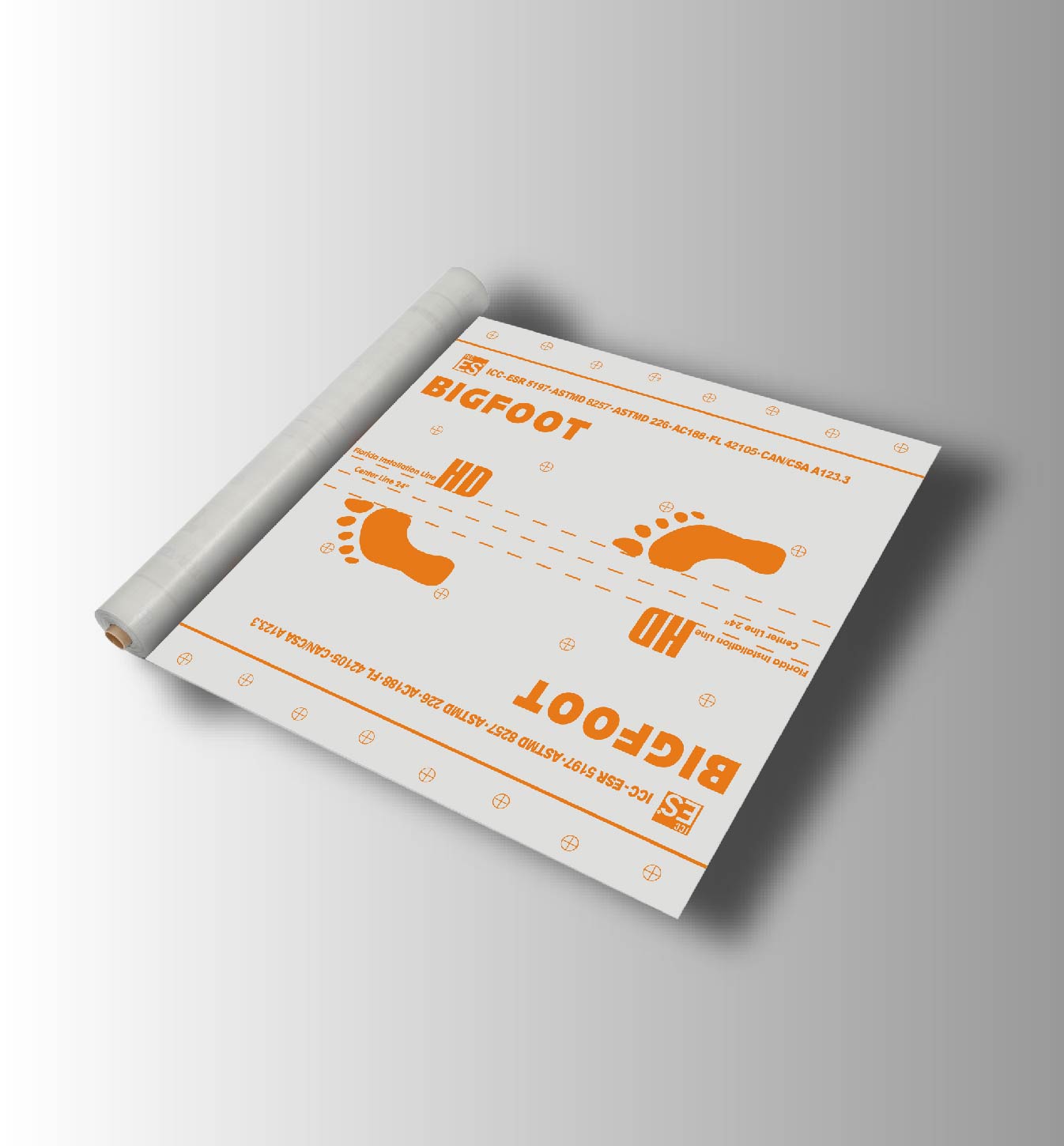
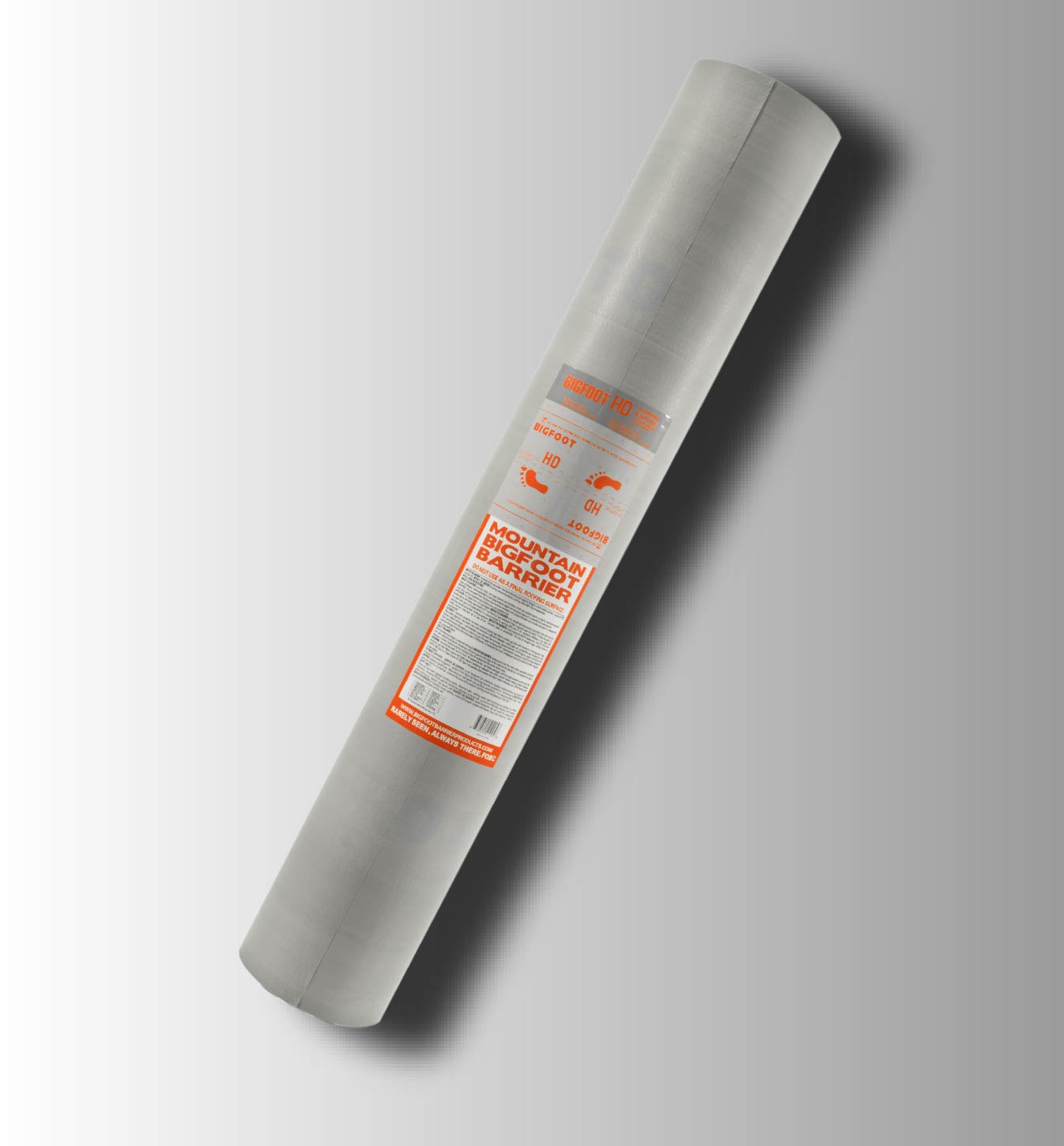

 BIGFOOT 15
BIGFOOT 15




 BIGFOOT 30
BIGFOOT 30




 BIGFOOT 180
BIGFOOT 180




 BIGFOOT HD
BIGFOOT HD










 Back
Back















